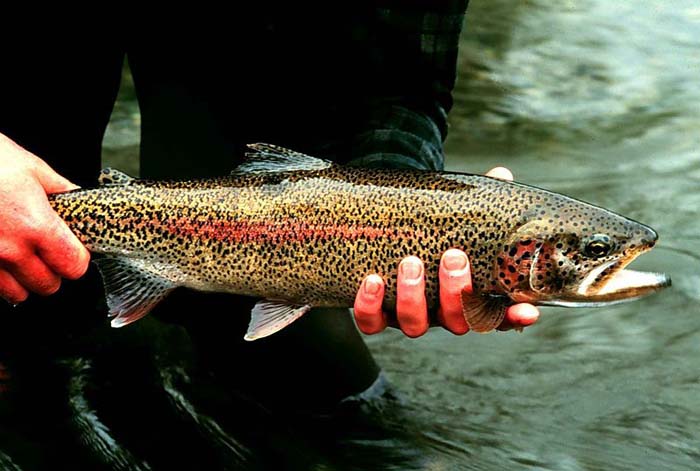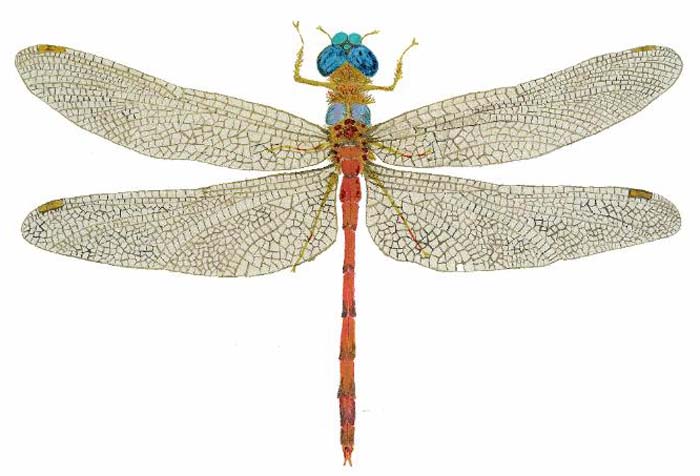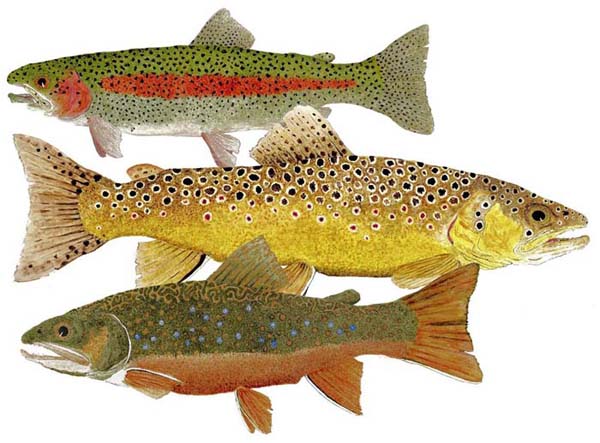“Summertime, an’ the livin’ is easy – Fish are jumpin’,” and the terrestrials are all over the place
By Skip Clement
[dropcap]I/dropcap]t’s mid-summer, and no Porgy and Bess song playing on my radio. it’s more like the kiddies are back in school, and the fish may be jumpin’, but the roads are clogged. School busses stop every few blocks, and teachers, workers, school cops, and school delivery drivers jam the main roads.
The good news
The rivers are no longer interstate-like clogged with “rafters,” but park trails and small streams still provide ample wrapper evidence that poorly mannered anglers have been there. On the bright side – state parks’ parking lots are all but empty.

An ant came to it – rainbow trout [Oncorhynchus mykiss]. Photo by Lisac Mark, U.S. Fish and Wildlife Service. A commons image.
Fly fishing the Appalachians
My angling buddy, Angie Roth, an Atlantan of the Southern Eberle clan, tells everyone I was born on the wrong side of the tracks because I like streamers. I preferably fish freshwater with patterns that don’t look like anything. Wooly Buggers, for example. I rarely nymph fish [although admit to their productivity], and love dries, but find the window for them never open enough for me to call it a persuable passion. But I always have buckets full of worms like the San Juan and buckets full of terra firma inhabitants like ants and use them all year-round.
Why fish terrestrials year round?
No matter where you live, whether the Appalachians; foothills of the Cascade Range in Washington; Edmonton, Alberta or Oil City in Western Pennsylvania, terrestrials are in play much sooner than is traditionally advertised. A feeder streams entire food supply for its finned inhabitants are predominantly land breeding insects. Why? Because there is no bug producing riffles. These small stream trouts feed almost exclusively on land bred insects, and if indigenous to the geography, mice.

Bluefaced Meadowhawk Dragonfly [male]. Illustration by award-winning watercolorist Thom Glace.
And it isn’t just small streams
The commonly held misconception is that trout reject terrestrial insects in the spring, early summer, and colder months because they only feed on mayfly and caddisfly hatches. However, Orvis’ Tom Rosenbauer wrote about that (paraphrasing – my memory not what it used to be), “Would you turn down chocolate mousse because it was breakfast time?”
Traditional trout attractor flies simulate terrestrials and do not forget that many of them have wings
Almost all terrestrial “kerplunk” in the water without care of making a disturbance. So, plopping your fly intentionally or unintentionally is a good thing. It’s music to a trout’s ears.
Insects, worms, beetles, grasshoppers, and others fall in or get blown into the water. Most fall close to the bank or brush overhangs, and some do get gobbled up quickly, but a lot of these drop-ins make it to where everything is floating sub-surface in the fast current convergences usually near the middle of the run. There, most of the fallen insect lives end. The key words latterly were not spelled out beyond mere mention, but if you caught my drift, it was sub-surface.
NOTE: Featured Image is rainbow, brown, and brook trouts by award winning watercolorist Thom Glace.






